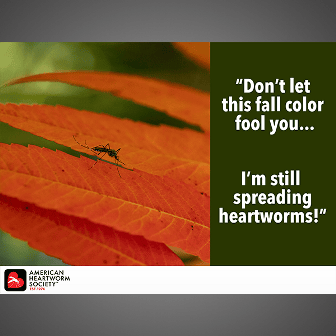by Brian A Digangi, DVM, MS, DABVP
Open/Download Quarterly Update as PDF
Veterinarians today are fortunate to have several point-of-care heartworm tests. In the majority of cases, these D. immitis antigen tests meet practitioners’ needs for speed and accuracy. However, when test results conflict with clinical expectations, the added step of heat pretreatment (HPT) of the sample should be considered.
Q. What can cause a “no antigen detected” result when the patient is infected?
A. Patient-side diagnostic tests rely on the presence of soluble heartworm antigen for the detection of heartworm infection. In cases where soluble antigen is bound to endogenous antibodies, forming an insoluble unit in the bloodstream known as an “immune complex,” the antigen is essentially blocked from detection. This blocking has been linked to several factors:
- Inflammation, including the robust response to a recent heartworm infection
- Administration of a heartworm preventive
- The presence of circulating microfilariae
These factors can disrupt the antigen-to-antibody ratio, resulting in a negative antigen test in an infected dog.
Q. How does heat HPT of serum samples unmask heartworm infections and when is it necessary?
A. Pretreatment denatures the proteins within the circulating immune complex so that antibodies precipitate and the antigen is freed, making it available for detection.
It is not necessary to heat-treat every sample that tests negative, but if heartworm infection is suspected and the test result is negative, HPT can help ensure an appropriate diagnosis.
Antigen testing of a heat-treated sample cannot distinguish between dead and living worms. If an infected dog has received adulticidal therapy but an HPT serum sample tests positive, it does not necessarily indicate that treatment failed. Whether HPT is used or not, veterinarians should test for both antigen and microfilariae 6 to 12 months after the last dose of adulticide.
Q. I haven’t performed HPT. Should I do it myself or send it to a lab?
A. HPT is best performed by veterinary diagnostic laboratories. It can be performed at minimal cost in 1–3 days and may even be available as an addon to a previously submitted sample. The most important reason to use a lab is the consistency and reliability of sample handling and testing techniques. Laboratories typically validate test results by concomitantly running positive controls. If it is not feasible to have a lab conduct the HPT panel, practitioners can follow a simplified HPT protocol in-clinic (see the sidebar below); however, the sensitivity of this technique is unknown.

In-clinic Heat Pretreatment Protocol
Step 1: Dilute serum sample with an equal volume of 0.9% NaCl. Put diluted serum in a glass collection tube.
Step 2: Place ~250 mL tap water in a 500 mL glass beaker.
Step 3: Microwave beaker to the point of boiling (~2 minutes in a 1,000-Watt oven).
Step 4: Remove heated water from microwave and place tube(s) with diluted sample in the heated water for 10 minutes. [Note: remove the rubber stopper before heating; some warping of the tube is expected.]
Step 5: Repeat antigen test.
For more information on this and other heartworm topics, visit heartwormsociety.org.







